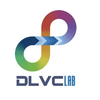LiLT-RoBERTa-en-base
| Property | Value |
|---|---|
| Parameter Count | 131M |
| License | MIT |
| Paper | View Paper |
| Author | SCUT-DLVCLab |
What is lilt-roberta-en-base?
LiLT-RoBERTa-en-base is a sophisticated document understanding model that combines a pre-trained RoBERTa (English) model with a Language-Independent Layout Transformer (LiLT). Created by Wang et al., this model represents a significant advancement in structured document understanding, offering a versatile solution that can be adapted to multiple languages while maintaining layout awareness.
Implementation Details
The model implements a unique architecture that stitches together two key components: a pre-trained RoBERTa encoder and a lightweight Layout Transformer. This combination enables the model to process both textual content and spatial layout information simultaneously, making it particularly effective for document analysis tasks.
- Feature Extraction capabilities for document understanding
- Transformer-based architecture utilizing PyTorch
- Supports Safetensors format
- Offers Inference Endpoints for deployment
Core Capabilities
- Document image classification
- Document parsing and structure analysis
- Document Question-Answering
- Language-independent layout understanding
Frequently Asked Questions
Q: What makes this model unique?
The model's uniqueness lies in its language-independent approach to layout understanding. Unlike traditional document understanding models, LiLT can be combined with any pre-trained RoBERTa encoder, making it adaptable to different languages while maintaining layout comprehension capabilities.
Q: What are the recommended use cases?
The model is particularly well-suited for tasks involving structured document understanding, including document classification, information extraction from forms, and document-based question answering. It's especially valuable when dealing with documents where both textual content and spatial layout are important.







